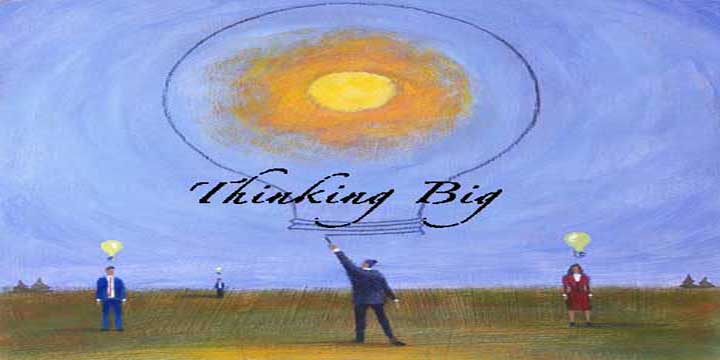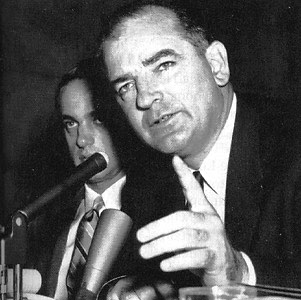To step into big thinking... try this one! I was first exposed to this in an article in QST magazine. I can't find the article but the basics of the concept is that atomic particles can be entangled so that if one is changed in some way the other changes instantly in the same way regardless where it is in the universe. There is quite the stir in the computer field regarding quantum entanglement. So read on!
Quantim Entanglement discussion from the University of Cambridge:
Quantum Entanglement
by Leah Henderson and Vlatko Vedral
In the day-to-day world that is well described by classical physics, we often observe correlations. Imagine you are observing a bank robbery. The bank robber is pointing a gun at the terrified teller. By looking at the teller you can tell whether the gun has gone off or not. If the teller is alive and unharmed, you can be sure the gun has not fired. If the teller is lying dead of a gun-shot wound on the floor, you know that the gun has fired.
This is elementary detective work. On the other hand, by examining the gun to see whether it has fired, you can find out whether the teller is alive or dead. We could say that there is a direct correlation between the state of the gun and the state of the teller. 'Gun fired' means 'teller dead', and 'gun not-fired' means 'teller alive'. We assume that the robber only shoots to kill and he never misses.
In the world of microscopic objects described by quantum mechanics, things are not always so simple. Imagine an atom which might undergo a radioactive decay in a certain time, or it might not. We might expect that with respect to the decay, there are only two possible states here: 'decayed', and 'not decayed', just as we had two states, 'fired' and 'not fired' for the gun or 'alive' and 'dead' for the teller. However, in the quantum mechanical world, it is also possible for the atom to be in a combined state 'decayed-not decayed' in which it is neither one nor the other but somewhere in between. This is called a 'superposition' of the two states, and is not something we normally expect of classical objects like guns or tellers. Two atoms may be correlated so that if the first has decayed, the second will also have decayed, and if the first atom has not decayed, neither has the second. This is a 100% correlation. But the quantum mechanical atoms may also be correlated so that if the first is in the superposition 'decayed-not decayed', the second will be also. Quantum mechanically there are more correlations between the atoms than we would expect classically. This kind of quantum 'super-correlation' is called 'entanglement'.
Entanglement was in fact originally named in German, 'Verschrankung', by Schrodinger, who was one of the first people to realise how strange it was. Imagine it is not the robber but the atom which determines whether the gun fires. If the atom decays it sets off a hair trigger which fires the gun. If it doesn't decay, the gun doesn't fire. But what does it mean if the atom is in the superposition state 'decayed-not decayed'? Then can it be correlated to the gun in a superposition state 'fired-not fired'? And what about the poor teller, who is now dead and alive at the same time? Schrodinger was worried by a similar situation where the victim of the quantum entanglement was a cat in a box where the decaying atom could trigger the release of a lethal chemical. The problem is that in the everyday world we are not used to seeing anything like a 'dead-live' cat, or a 'dead-live' teller, but in principle, if we expect quantum mechanics to be a complete theory describing every level of our experience, such strange states should be possible. Where does the strange quantum world stop and the ordinary classical world begin? These are problems which have now been debated for decades, and a number of different 'interpretations' of the quantum theory have been suggested.
The problem was brought into focus by a famous paper in 1935 by Einstein, Podolsky and Rosen, who argued that the strange behaviour of entanglement meant that quantum mechanics was an incomplete theory, and that there must be what came to be known as 'hidden variables' not yet discovered. This produced a famous debate between Einstein and Niels Bohr, who argued that quantum mechanics was complete, and that Einstein's problems arose because he tried to interpret the theory too literally.
However in 1964, John Bell pointed out that for certain experiments classical hidden variable theories made different predictions from quantum mechanics. In fact he published a theorem which quantified just how much more strongly quantum particles were correlated than would be classically expected, even if hidden variables were taken into account. This made it possible to test whether quantum mechanics could be accounted for by hidden variables. A number of experiments were performed, and the result is almost universally accepted to be fully in favour of quantum mechanics. Therefore there can be no 'easy' explanation of the entangled correlations. The only kind of hidden variables not ruled out by the Bell tests would be 'non-local', meaning they would be able to act instantaneously across a distance.
More recently, from the beginning of the nineties, the field of quantum information theory opened up and expanded rapidly. Quantum entanglement began to be seen not only as a puzzle, but also as a resource for communication. Imagine two parties, Alice and Bob who would like to send messages to one another over a distance. In 1993, Bennett et al. showed that if Alice and Bob each hold one of two particles which are entangled together, a quantum state can be transmitted from Alice to Bob completely by sending fewer classical bits than would be required without the entanglement. This process has been called 'quantum teleportation'. It involves not only bits for sending information, but 'e-bits', or entanglement bits, which consist of a maximally entangled pair of particles. Other ways in which entanglement can be used a an information resource have also been discovered, for example, dense coding, cryptography and applications to communication complexity. Entanglement was found to be a manipulable resource. Under certain conditions, states of low entanglement could be purified into more entangled states by acting locally, and states of higher entanglement could be 'diluted' to give larger numbers of less entangled states.
Investigation of quantum entanglement is currently a very active area. Research is being done on measures for quantifying entanglement precisely, on entanglement of many-particle systems, and on manipulations of entanglement and its relation to thermodynamics.
LEARN MORE
HERE








